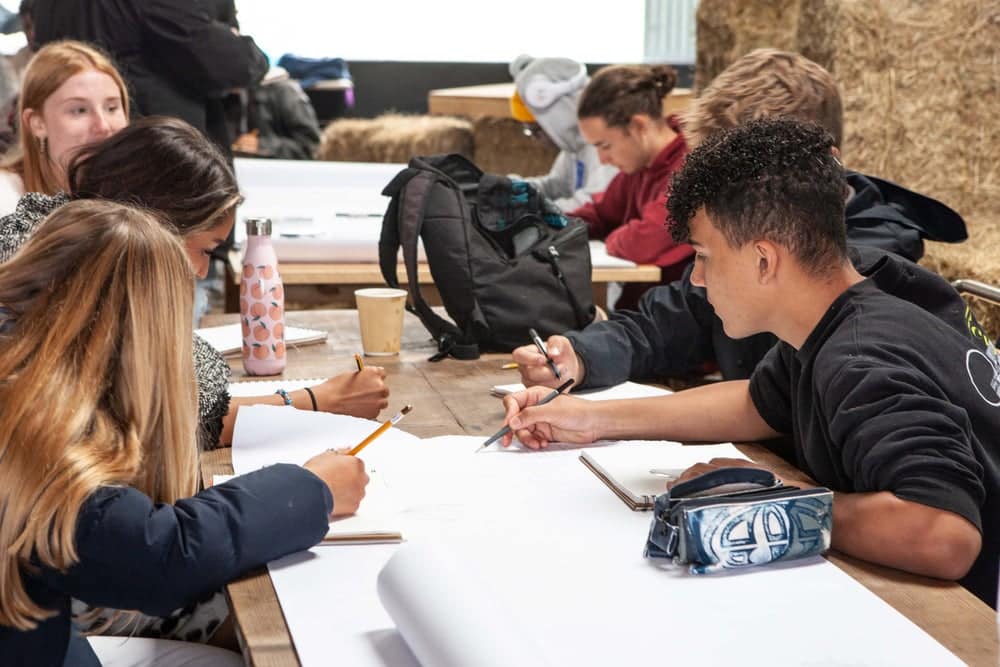Summer School 2023: Student Sponsorship

The annual Architectural Summer School will see its seventh iteration in 2023. Initiated by Robert Bargery of the Royal Fine Art Commission Trust and Niall Hobhouse of Drawing Matter, the course was developed in collaboration with Professor Andrew Clancy of Kingston School of Art and has forged connections with leading educators, thinkers and practitioners. The programme has been widely praised by all students as providing an unrivalled insight into architecture as a subject, and their likely life in university.
The course is designed to give A-Level students with an interest in architecture and the built environment an insight into how professional architects record what they see, how this information connects to the buildings they produce and how the process of drawing can be used to test and develop an idea.
Our aim is to reach young people from a diverse range of backgrounds, and particularly those who might not otherwise have any exposure to the subject, and may have only the haziest notion of what an architecture degree course – and any subsequent career – is likely to entail. In one sense, we are trying to make up for the absence of an architecture A-Level, in the hope that the time spent with us will allow a more informed decision as to whether to pursue an architecture degree.
We are particularly keen to encourage students from schools in less privileged neighbourhoods across the UK, and are determined that the course – including accommodation, tuition and drawing materials – is entirely underwritten. Applicants are invited to submit drawings and a short written statement, and are selected strictly on merit.
The Drawing Matter Trust is a Registered Charity and its trustees are committed to applying any balance in excess of this year’s target towards the 2024 course, for which we have broader ambitions in terms of location and student numbers. We can of course provide more detailed budget figures. At the specific request of sponsors individual students can be offered named scholarships.
All sponsors will be invited to a review of the students’ work held in August at Hauser & Wirth in Bruton, followed by a tour of the buildings in the farmyard at Shatwell, a glimpse of the drawings in the collection there and a discussion of what the teachers have learned in the process, and about the continuing role of drawing (in whatever form) in architectural education.
Click here to sponsor the 2023 Summer School
Click here for more information about the 2023 Summer School, and past years.
